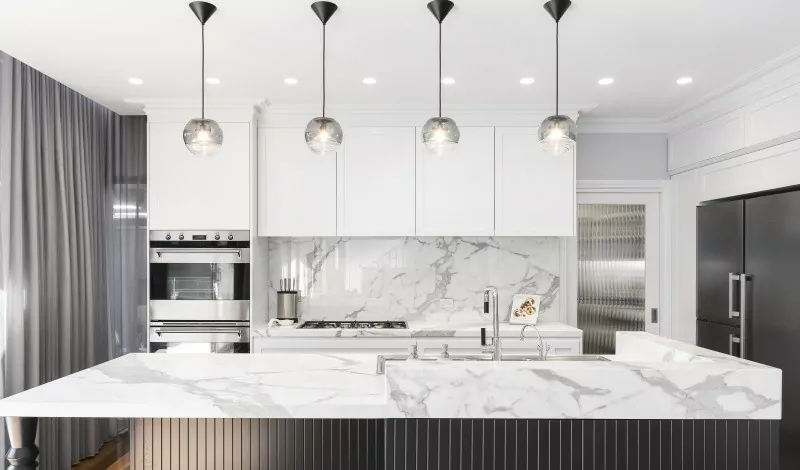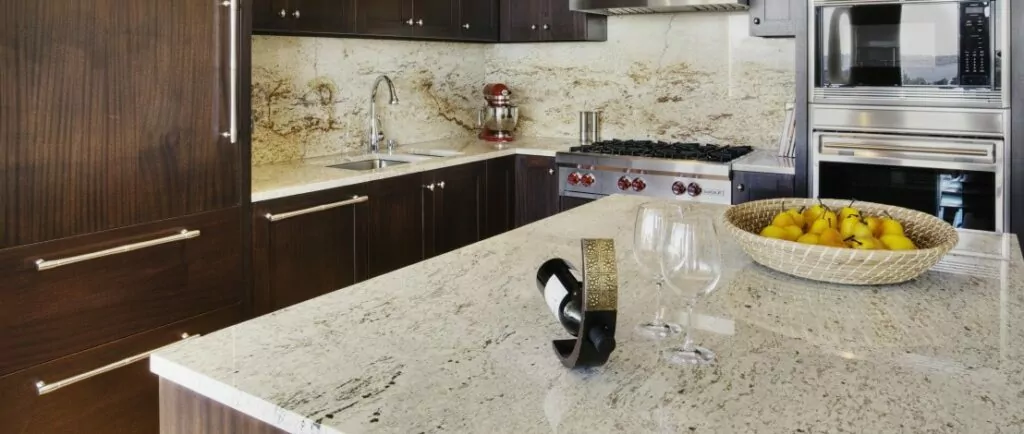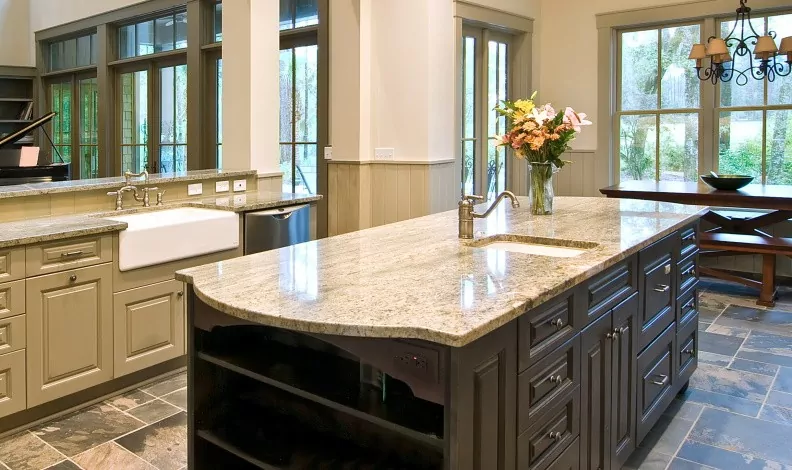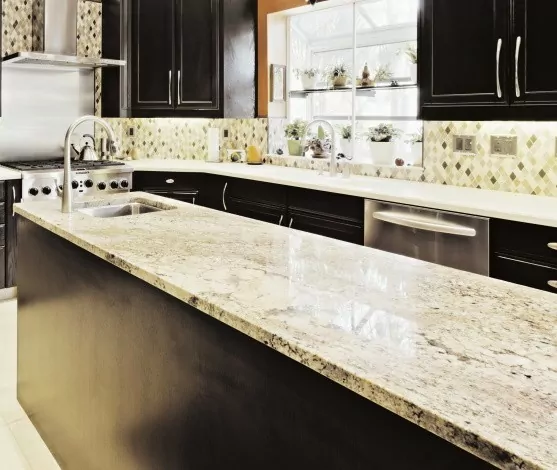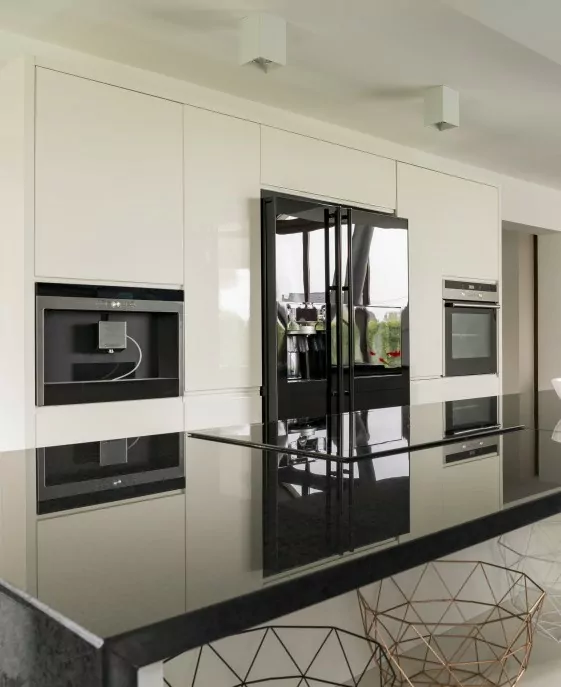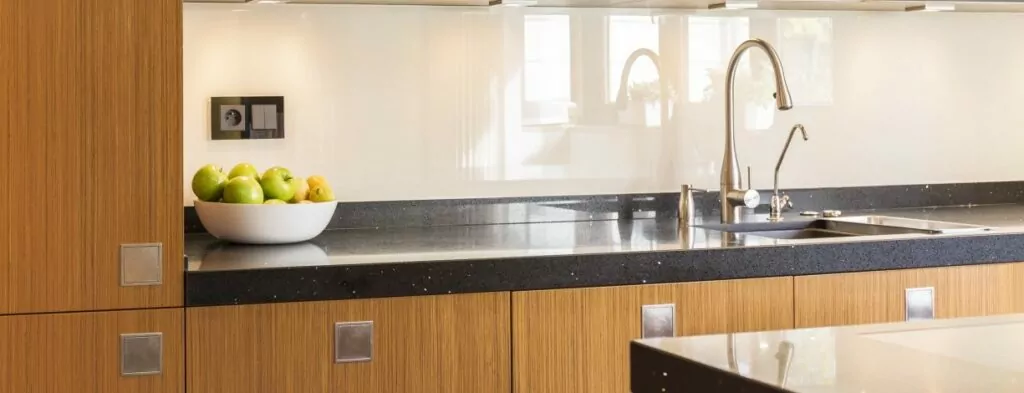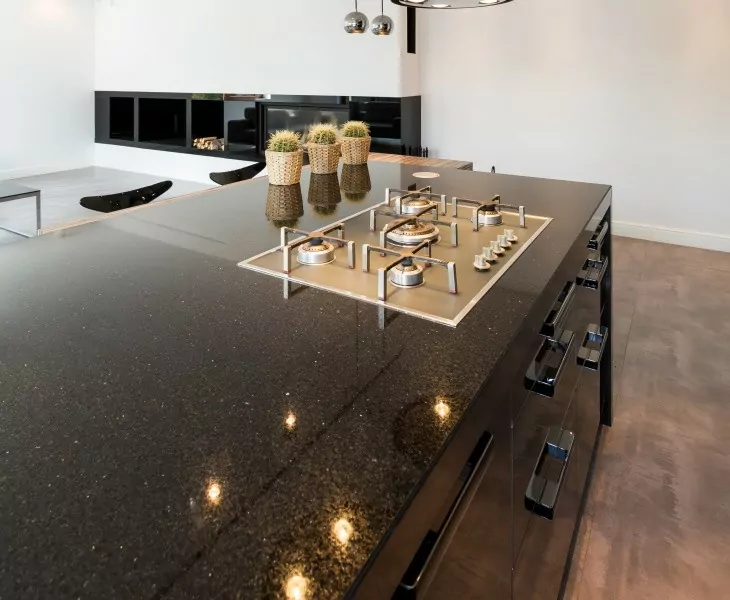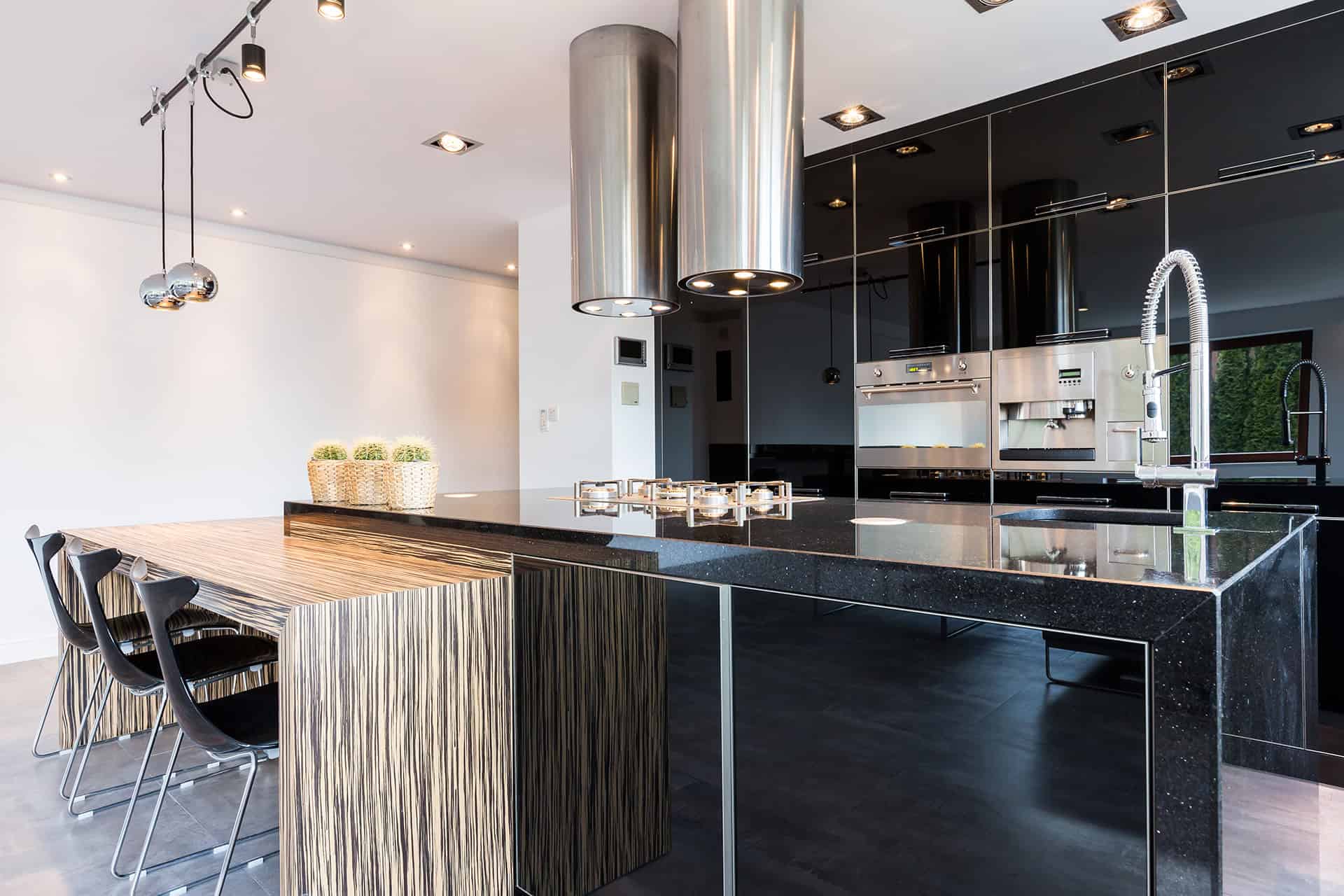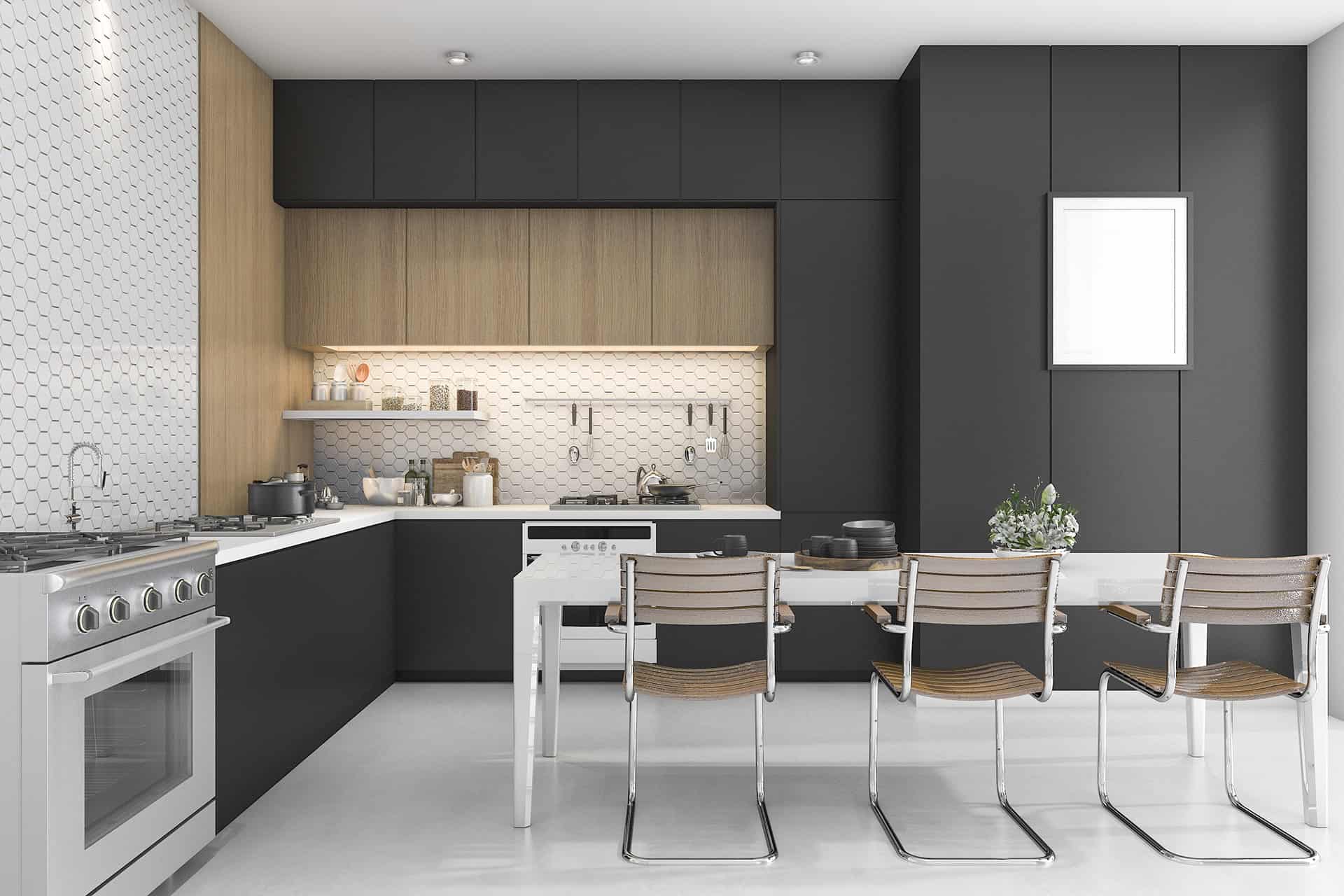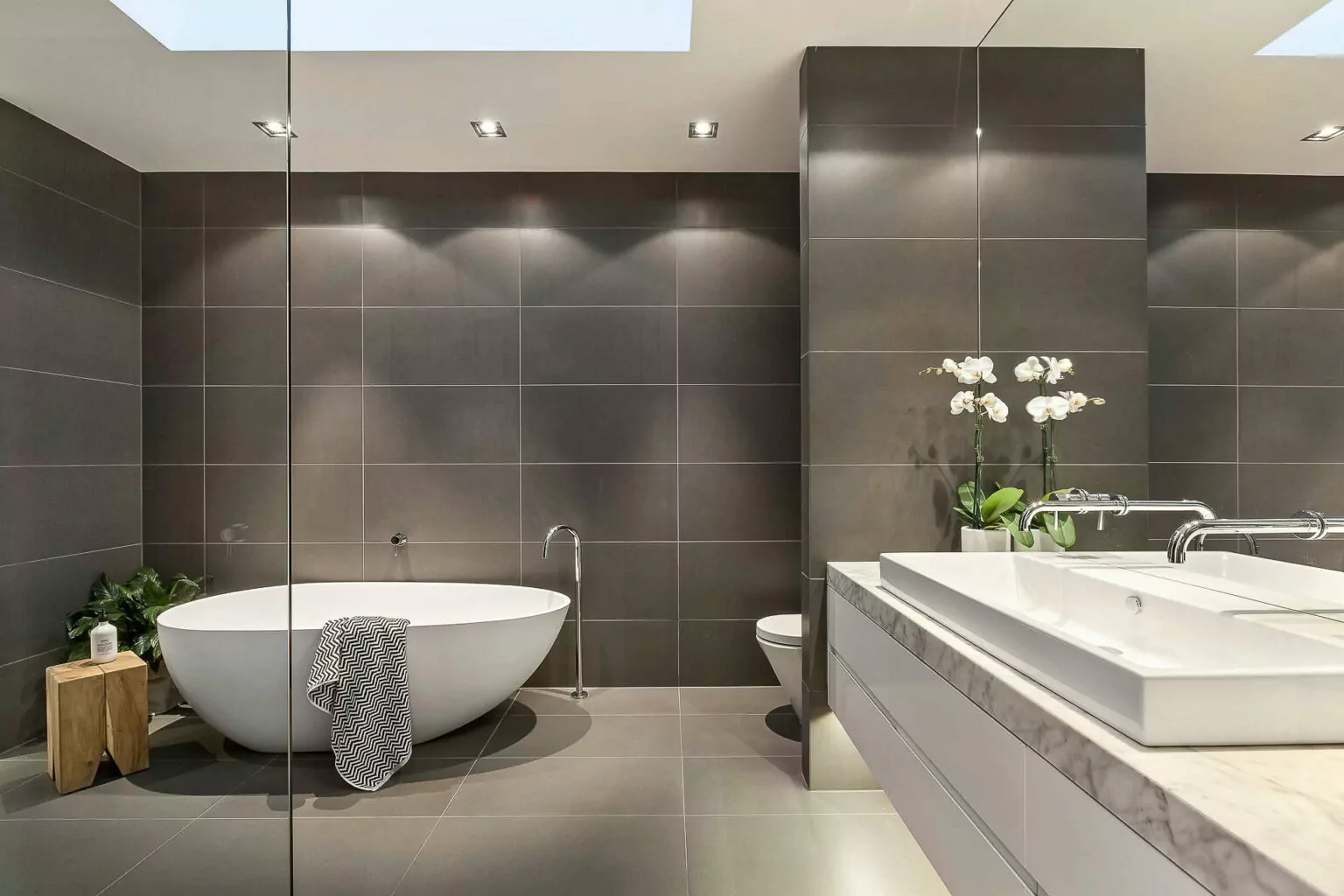It is not uncommon that people fail to tell the difference between quartz and quartzite countertops when deciding on a new look and feel for their kitchen. Though both materials sound like the same thing, they hold a host of dissimilarities. This guide will help you determine the winner in the eternal quartzite vs. quartz battle.
What Is A Quartzite Countertop?
It is a metamorphic rock, composed mainly of quartz, one of the most abundant minerals in the earth’s crust. Quartzite was formed by metamorphism (structural change under the influence of high temperatures and pressure) from siliceous sediments. Most often, its formation is associated with the recrystallization of quartz sandstones or igneous rocks, such as porphyry.
The quartzite stone has a dense granular structure: microscopic grains of quartz merge into a solid mass with a splintered or concave fracture. According to the classification of M. Bauer, the breed belongs to semi-precious ornamental stones – this order also includes malachite, jasper, and jade.
Quartzite is often the #1 choice when it comes to kitchen remodeling. The reason is its extreme fire-resistance, which cannot be beaten by other popular rocks. Quartzite stone can withstand the heat of as high as 1700-2000° C. That is why cooking stations, ovens, and furnaces frequently have a quartzite backsplash behind them to prevent inflammation.
Along with an outstanding heatproof quality, quartzite has a very lovely, sumptuous appearance. The stone has an even and smooth surface and a rich palette of shades and textures.
Quartzite can be used without restrictions inside dwelling homes and non-residential spaces, including for floors, bathrooms, window sills, stairs, sinks, and worktops. It can also be used in a children’s room as a decorative material, as it is a natural stone that does not emit any harmful particles so cannot harm a child. Quartzite is also a smart choice for landscape design, allowing you to create a gorgeous fountain, patio, terrace, recreation area, or walking paths in your yard.
How are Quartzite Countertops Manufactured?
Slabs of natural stone are mined and precisely cut to produce quartzite countertops. Most slabs are quite porous and cannot be used as an immediate material for kitchen countertops – without sealant, it may easily absorb liquids. For that reason, countertops are usually coated with polyurethane, wax, or acrylic before being sent to the market. This process helps to enhance the natural steadiness of quartzite countertops in the kitchen and maximize their lifetime.
What is the difference between quartz and quartzite?
The major distinction between quartz and quartzite is that the former is a synthetic material, while the latter is a naturally born stone. A quartzite countertop comes to life as sandstone, which, under heat and pressure processes, merges with shiny quartz crystals, forming quartzite.
The quartz countertop is made from the same crystals found in quartzite, but an engineered process mixes quartz crystals with special resin (like epoxy glue), pigments, and other inclusions, for example, small pieces of glass. As a result, we have a highly durable, porosity-free material that can come in a huge variety of colors and designs that cannot be found in nature.
In addition to different composition contents, there is also a visual discrepancy between the two materials. Quartzite is often confused with marble or granite because it has gentle vines typical for marbles, and is similar in color and pattern to some types of granite. Those looking for a natural look with a lot of veins and patterns may prefer a quartzite countertop over a quartz one.
Since quartz is a man-made product, it is possible to make quartz countertops mimic the appearance of any stone, and it can be performed in any color and pattern, including unusual ones, such as bright orange or apple green quartz countertops. If you want custom-made, specifically colored countertops, or want a consistent pattern all over the stone slab, a quartz countertop is probably a better choice for your kitchen remodel project.
Another remarkable difference is the maintenance requirements and durability of each material. Since quartz particles are blended with other materials during the manufacturing process (which helps to eliminate natural porosity), quartz countertops can last longer compared to peers. Quartz has a non-porous surface and, therefore, is more resistant to chips, scratches, and bacteria.
Quartzite is also a very hard rock, but not so dense, and subject to staining in heavily used areas such as the kitchen. Quartzite countertops require sealing to prevent staining of the surface, while quartz is extremely low-maintenance.
What Is The Price Of Quartzite Countertops?
In terms of price, both stones are quite similar. Quartzite and quartz prices start with $70 per square foot and may go beyond $100. But, these are just material costs.
Since quartzite is a natural stone, complicated projects (like an installation of quartzite bath tubes) may require special cutting and the use of professional instruments, which dramatically affects the project’s costs.
Quartz can be molded into almost any form or design imaginable, making quartz a more effective solution to keep up with the latest kitchen renovation trends.
How to clean quartzite countertops?
Cleaning considerations differ significantly for both matters, either.
The sealant cannot stay forever on quartzite countertops and needs to be re-applied at least once a year. Due to its naturally porous surface, a quartzite countertop must be cleaned from spills quickly, otherwise, the liquid will go through the stone, staining the surface.
If you want to make sure the quality and look of your quartzite countertops remain uncompromised, you want to remove spills immediately with a damp cloth. For everyday cleaning, add a few drops of mild liquid detergent to the water before you soak a cloth in it. And do not use abrasive cleaners.
Quartz vs quartzite countertops: which are better for a kitchen?
Since quartz stone can be fabricated by a man, it allows for great customization and color selection. With quartzite, your palette options will be limited to the stone’s natural appearance.
Quartzite countertop surfaces will require an annual application of a sealant, which is not an issue with quartz alternatives. Both rocks are subject to scratching if treated with aggressive cleaners or brushes.
Quartzite worktops are incredibly fire-resistant and can bear temperatures of as high as up to 2000 degrees.
Quartz is an engineered product, and lots of artificial inclusions like resins and polymers make it less fire-proof than its primary rival. When manufacturing quartz, natural quartzite crystals are fused with a special resin (epoxy adhesive) to form a countertop. A quartz countertop contains up to 93% of quartz, the rest content is resin and pigments. The resin can only withstand temperatures up to 200 degrees. This means that you cannot place hot cookware
So, how to decide?
So if you like the abundance of color options and the consistent look of your countertops without breaking your bank, quartz might be just for you.
Still, if you are looking for a stunning, one-of-a-kind natural appearance coupled with uttermost flame-resistance, then you want to incline to quartzite countertops.
Groysman Construction is a leading home renovation company in San Diego. If you are planning to give your kitchen a stylish overhaul, while boosting your kitchen’s functionality and storage capacity, our team of well-trained, talented designers and technicians is your valuable ally in your quest for your home improvement. Contact us today to schedule a free onsite consultation on how we can turn your kitchen into a masterpiece of modern interior design art.


